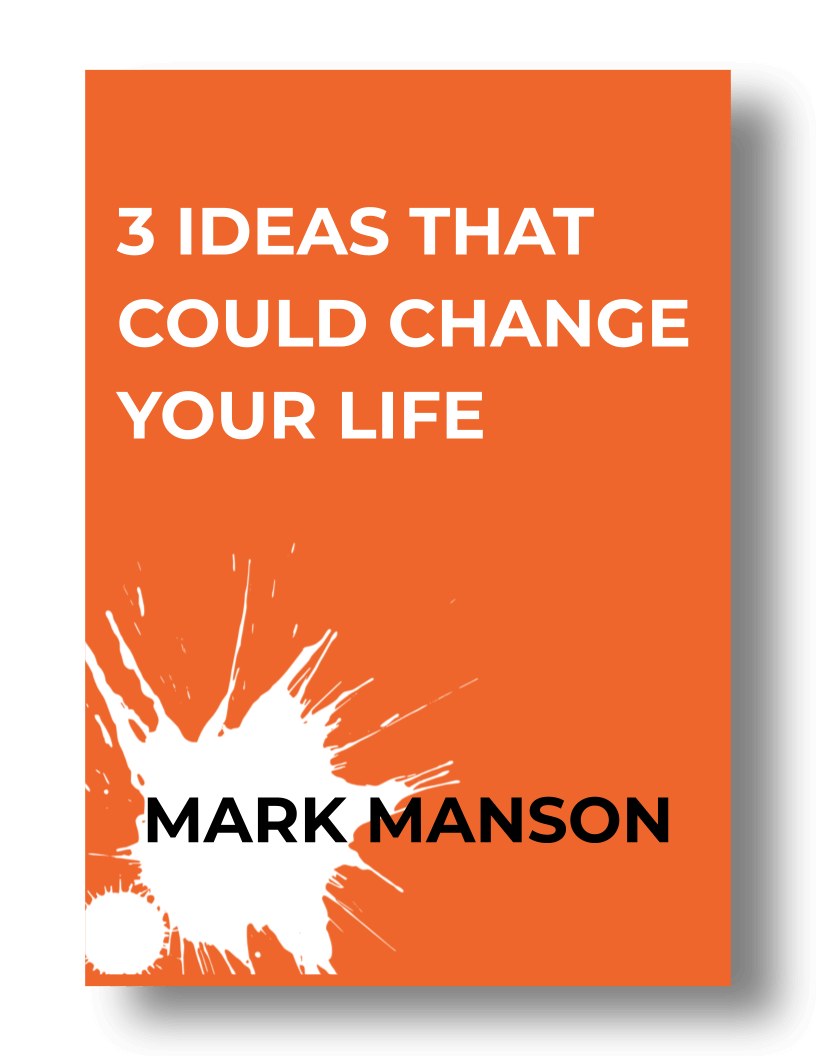Trigger Warning: Reality Hurts
Years ago, many readers wrote to me complaining that I didn’t include trigger warnings in my articles. This was 2014-15 or so. The trigger warning thing had become popular on university campuses and left-leaning news sites. Given that at the time many of my readers were young students, an expectation arose that I would follow suit.
Yet, I refused (and still do). Back then, this caused a lot of headaches for me and made sifting through my inbox feel like playing hopscotch in a minefield. “How could you not?” readers would write, exasperated. “I thought you cared about mental health issues.” Well, yes I do… which is why I don’t use them.
I remember when I was struggling and broke in my 20s, a family friend bought his daughter—who was a couple of years younger than me—her own house. One day, joking around with my dad, I said to him, “You know dad, if you really loved me, you’d buy me a house too.” He quickly replied, “No Mark, it’s because I love you, that I would never buy you a house.”
To me, it felt as though readers were coming at me saying, “If you loved us, you’d protect us from anything that might be upsetting or uncomfortable.” And I was responding with, “No, it’s because I love you that I will never protect you from what is potentially upsetting or uncomfortable.”
This shouldn’t have surprised anyone, as this is and was pretty much my entire message around personal development and self-help: pain is a healthy part of the process. Discomfort and upsetting ideas are what make you better. Confronting things that upset you helps you overcome them and yourself.
On top of that, I would argue, I doubt trigger warnings work, anyway. Anyone who has studied psychology (or advertising) for half a minute knows that people are drawn to what upsets them, not the opposite.
I took a lot of shit for this stance, back in the day. I even had a couple journalists talk some shit about me for not using them, implying that I was hypocritical. But whatever, I had better things to do. I guess you could say (here it comes) that I didn’t give a fuck.
The Verdict Is In
This is the part where I get to say, “I told you so.”
Researchers have been studying trigger warnings for the past seven years and a couple weeks ago, the first meta-analysis was done to gauge how effective they have been. Meta-analyses are a big deal because they gather all the major studies that have been done on a topic and pull all the data together as though they were done in one giant piece of research. This gets them to a dependable result. And in regard to trigger warnings, the results were stark: They don’t help. At all. And in some limited cases, they may even make things worse.
Let’s talk about why.
Studies consistently showed that trigger warnings do nothing to alleviate fears, pain, or anxiety about upsetting material. In fact, in some rare cases, they actually made it worse.
Imagine you lose your job. That’s pretty fucking upsetting.
Now, imagine the way you lost it is that you’re at work, doing your thing one day, and a co-worker walks by and says, “Hey, just want to give you a trigger warning: you’re going to lose your job tomorrow, maybe don’t come in to work.”
Would that make you any less upset? Would it make you feel better at all? Would you be like, “Oh cool, I can just stay home tomorrow”?
No, not only are you still upset about losing your job, but now you have all this extra time to agonize and think about what the fuck is happening. This is, on a small scale, what trigger warnings do to people: it gets them upset about the fact that they’re going to be upset at some point in the future.
The counterargument here is that, “Well, that analogy doesn’t work because trigger warnings help people decide what to read and what not to read.” But again, the data doesn’t support this. In study after study, researchers found that trigger warnings had no effect on people’s choice to read content. And, in fact, a few found that people with PTSD symptoms are actually more drawn to content with trigger warnings.
This will not come as a surprise: as I mentioned earlier, people don’t turn away from what upsets them; they are drawn to it. Ever heard of, “If it bleeds, it leads?” Yeah, there’s a reason that is a thing in the news media: people can’t help but look at stuff that bleeds.
3 Ideas That Might Change Your Life
Your information is protected and I never spam, ever. You can view my privacy policy here.

The Dying Fad of “Safety-Ism”
In their 2018 book, The Coddling of the American Mind, Jonathan Haidt and Greg Lukianoff write about a culture of “safety-ism” that arose in the early 2010s. They called it “safetyism” because it was a collection of morals and values that obsessed over and optimized everything for young people to feel safe and comfortable. This meant parents not letting their children play outside alone. It meant removing upsetting or controversial content from television, the internet, or news media. And yes, it also included trigger warnings.
The aims of safety-ism were noble. They saw that young people were experiencing greater amounts of anxiety, stress, and depression than previous generations and sought to remedy their angst by protecting them from anything that could potentially harm or upset them.
But this is not how the human mind works. The human mind is not fragile—it does not need to be protected and cushioned from the hard surfaces of reality like a vase or piece of fine china. The human mind is antifragile—that is, it gains from discomfort and strain. That means to grow stronger, the human mind needs to regularly be confronted with difficult and upsetting experiences to develop stability and serenity for itself.
Unlike most people, I’m actually optimistic that safety-ism has peaked. It’s been years since I’ve gotten an email complaining about trigger warnings. I get far fewer emails complaining about upsetting content or accusing me of some form of bigotry or fascism. Either I’ve successfully alienated all of those readers out of my audience or many of them are finally realizing and accepting that this bizarre “woke” version of the world is unrealistic and untenable.
Either way, surveys show that these sorts of ideas are not exactly popular. Most people don’t believe trigger warnings work. Only a small but loud minority does—17% of people, according to one survey.
But think about it this way. If you’re running a news media company in a highly competitive environment with razor-thin margins and you know that including trigger warnings can make 17% of people like your publication that much more, why not include them? Why not promote them? That 17% of readers can be the difference between a profitable year and an unprofitable year. They can be the difference between hiring more staff and firing them.
So you use them. They’re easy. They take no effort. And the 83% of people who don’t believe they work likely won’t notice or care anyway.
Then when you use them, your competitors start using them because they also want to win over that 17%. Pretty soon, everyone’s got trigger warnings. And suddenly, there’s this awkward sense that, “Wow, trigger warnings are everywhere—so I guess everyone must believe in them.”
And yet, most people don’t.
Like most things online, it’s a mirage. It’s simply another example of the great internet funhouse mirror: the views of loud minorities get exaggerated and the views of the silent majority are squashed and minimized.
Don’t lose sight of reality. Yes, the hard, persistently unpleasant, always surprising reality. Not the one invented in the minds of the mob on Twitter.
And never, ever email me about this dumb shit ever again.
